Natural Calamities - 2 Class 5 Worksheet Science
Q1: Multiple Choice Questions (MCQs).
(i) Which natural calamity is measured using the Richter scale?
(a) Flood
(b) Thunderstorm
(c) Earthquake
(d) Tornado
Ans: (c)
The Richter scale measures the magnitude (size) of an earthquake.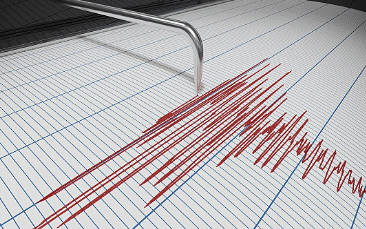
(ii) What should you do during an earthquake to protect yourself?
(a) Run outside immediately.
(b) Stay indoors and take cover under a heavy piece of furniture.
(c) Stand near windows to see what's happening.
(d) Gather around tall and unstable objects.
Ans: (b)
During an earthquake, it is safer to stay indoors and take cover under a sturdy piece of furniture to protect yourself from falling objects.
(iii) What causes a tsunami?
(a) Volcanic eruption
(b) Earthquake under the ocean
(c) Tornado
(d) Heavy rainfall
Ans: (b)
Tsunamis are usually caused by underwater earthquakes that displace large volumes of water.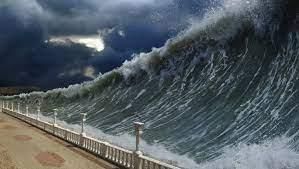
(iv) Which of the following is a natural calamity caused by extreme cold weather?
(a) Avalanche
(b) Drought
(c) Forest fire
(d) Landslide
Ans: (a)
Avalanches are natural calamities that occur due to extreme cold weather and are caused by a mass of snow, ice, and rocks sliding down a mountainside.
(v) The "eye" of a hurricane is:
(a) The most dangerous part with the strongest winds.
(b) The calm center with light winds.
(c) The outer edge of the storm.
(d) The part where heavy rainfall occurs.
Ans: (b)
The "eye" of a hurricane is the calm center of the storm, surrounded by the most dangerous part with the strongest winds called the "eyewall."
Q2: Fill in the Blanks.
(i) Natural calamities are __________ events caused by natural forces.
Ans: unpredictable
Natural calamities, such as earthquakes, floods, and tornadoes, are natural disasters that occur unexpectedly and are beyond human control.
(ii) The shaking of the ground during an earthquake is called __________.
Ans: seismic activity
Seismic activity refers to the vibrations and movements in the Earth's crust caused by the release of energy during an earthquake.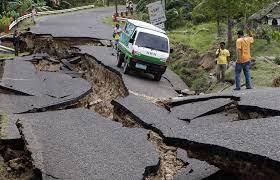
(iii) A violent rotating column of air extending from a thunderstorm to the ground is known as __________.
Ans: a tornado
A tornado is a rapidly rotating column of air that is in contact with both the surface of the earth and a cumulonimbus cloud. It is capable of causing significant damage.
(iv) The process of water turning into vapor and rising into the atmosphere is called __________.
Ans: evaporation
Evaporation is the transformation of liquid water into water vapor, which then rises into the atmosphere.
(v) A sudden, violent shaking of the ground caused by movements within the Earth's crust is called __________.
Ans: an earthquake
Earthquakes occur when there is a sudden release of energy in the Earth's crust, leading to seismic waves that cause the ground to shake.
Q3: True or False.
(i) Earthquakes only occur on land.
(ii) Tornadoes are also known as twisters.
(iii) Floods can be caused by heavy rainfall or melting snow.
(iv) Volcanoes can only be found on land and not underwater.
(v) Thunderstorms are only dangerous if they occur during the day.
Ans:
(i) False - Earthquakes can also occur underwater, causing underwater earthquakes or tsunamis.
(ii) True - Tornadoes are also known as twisters due to their twisting appearance.
(iii) True - Floods can be caused by heavy rainfall, melting snow, or the overflow of rivers.
(iv) False - Volcanoes can be found on land as well as underwater, along mid-ocean ridges.
(v) False - Thunderstorms can be dangerous at any time, day or night, due to lightning and strong winds.
Q4: Match the Column.
Match the natural calamities in Column A with their descriptions in Column B.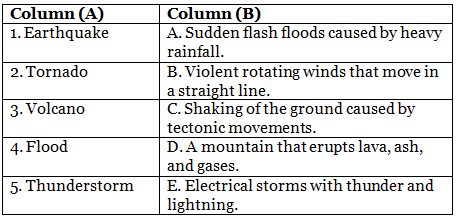
Ans:
Q5: Short Answer Questions.
(i) What safety measures can you take during a thunderstorm?
Ans: Safety measures during a thunderstorm:
- Stay indoors and avoid using electrical appliances.
- Do not take shelter under tall trees or metallic structures.
- Unplug electronic devices to protect them from lightning strikes.
- Wait for at least 30 minutes after the last clap of thunder before leaving shelter.
(ii) How do volcanoes form?
Ans: Volcanoes form when magma (molten rock) from the Earth's mantle rises to the surface through vents or openings in the crust. When the pressure builds up, the magma is forcefully ejected, along with ash, gases, and sometimes lava, creating a volcanic eruption. Over time, repeated eruptions can build up a mountain-like structure known as a volcano.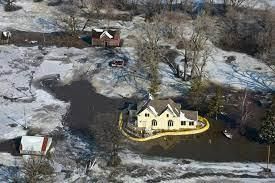
(iii) Explain the difference between a hurricane and a tornado.
Ans: Difference between a hurricane and a tornado:
- Hurricane: Hurricanes are large, rotating tropical storms that form over warm ocean waters. They have a well-defined "eye" at their center and can be hundreds of miles wide. Hurricanes are categorized based on their wind speeds and are capable of causing widespread damage with storm surges, heavy rainfall, and strong winds.
- Tornado: Tornadoes are smaller, intense, rotating columns of air that form within severe thunderstorms. They have a much smaller "eye" or center compared to hurricanes. Tornadoes are categorized based on the Enhanced Fujita (EF) scale, which measures their intensity and potential damage. Tornadoes are known for their destructive winds and relatively narrow paths of devastation.
(iv) What are the primary causes of floods?
Ans: Primary causes of floods:
- Heavy rainfall: Excessive rain can overwhelm drainage systems and cause rivers to overflow their banks, leading to flooding.
- Melting snow: In regions with cold winters, rapid snowmelt during the spring can result in the swelling of rivers and subsequent flooding.
- Storm surges: During hurricanes and tropical storms, the combination of strong winds and low atmospheric pressure can push seawater inland, causing coastal flooding.
(v) How can we help people affected by natural calamities?
Ans:
- Donate to reputable relief organizations providing aid and support to affected communities.
- Volunteer time or resources for relief efforts.
- Spread awareness about the situation to encourage more help and support.
- Provide food, water, and essential supplies to those in need.
- Offer temporary shelter and medical assistance to the affected population.
|
42 videos|230 docs|45 tests
|
FAQs on Natural Calamities - 2 Class 5 Worksheet Science
| 1. What are natural calamities? |  |
| 2. How do natural calamities occur? |  |
| 3. What are the impacts of natural calamities? |  |
| 4. How can we prepare for natural calamities? |  |
| 5. How can we contribute to the relief efforts after a natural calamity? |  |





















